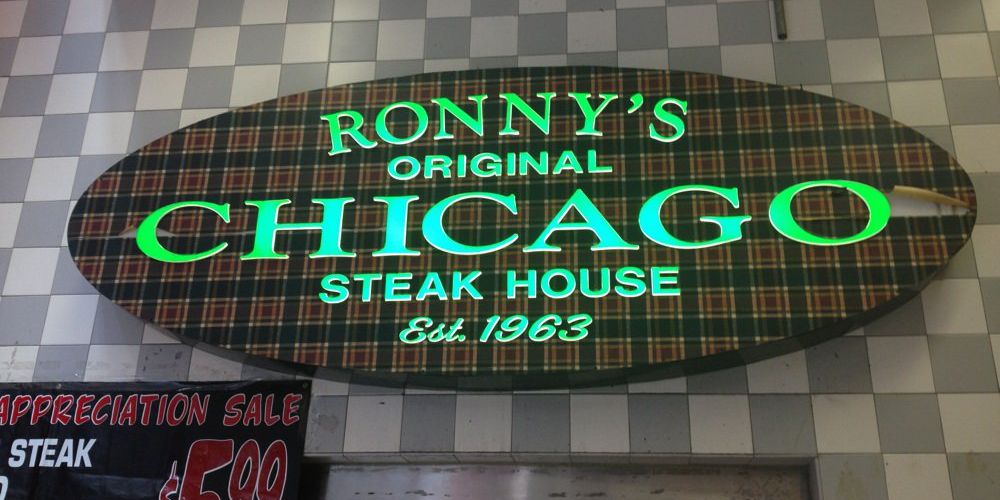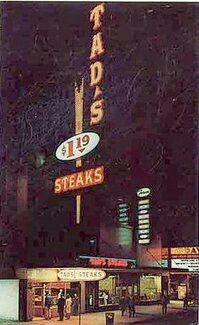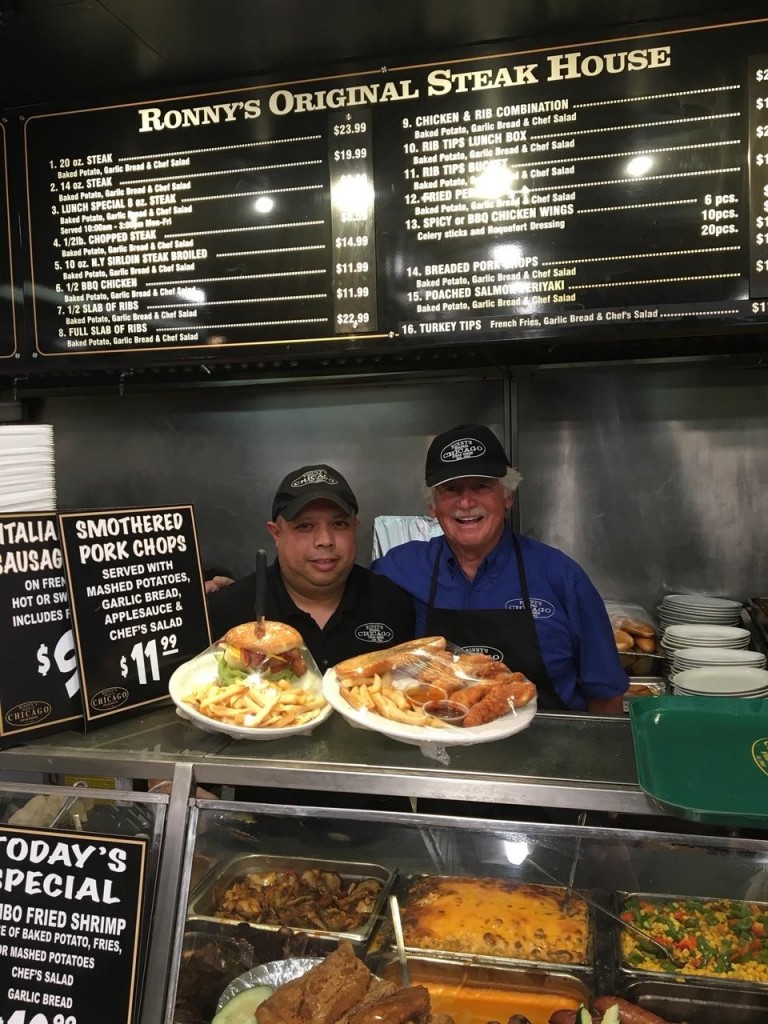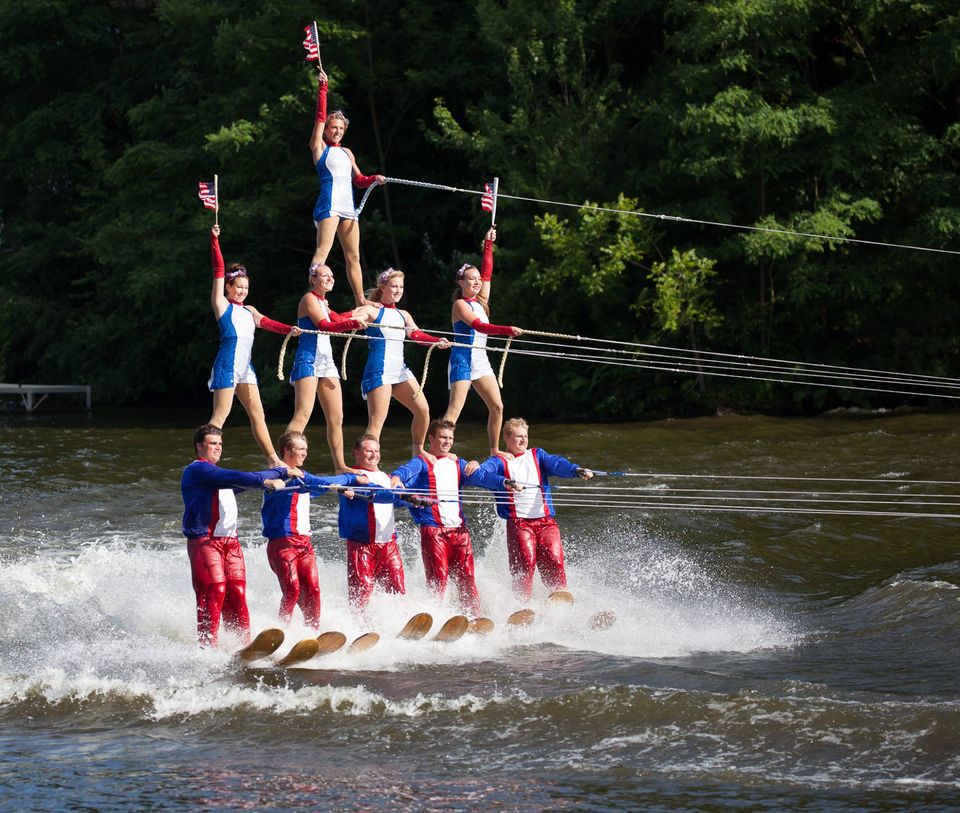Ronny’s Steakhouse–When the Loop Sizzled
Ronny’s Steakhouse closed over Labor Day weekend in Chicago’s Loop.
It was another signal in the shift of the urban community as a result of the pandemic. At one time there were six Ronny’s steakhouses in downtown Chicago. The last one standing was on the ground floor of the Thompson Center building. Government workers came to Ronny’s. Bank tellers ate there. There were wayward tourists. The late actor Philip Seymour Hoffman was a fan, most notably stopping in around 2010 when he was directing the “Long Red Road” at the nearby Goodman Theatre.
They are all ghosts in 2020.
Ronny’s was a place out of time during its time, which helped explain its appeal.
Near the front of the cafeteria line, the walls featured photos of celebrities like David “The Fugitive” Janssen, the Rat Pack, and Hale Berry. Monster steaks? Who eats those anymore? The “Ultimate Pancake Breakfast (3 pancakes, steak or ham, 2 eggs, hash browns, syrup and a wheelbarrow of butter.) Sounds like a prisoner’s last meal.
The owner of Ronny’s is not named Ronny at all.
He is Kenny Munic. His father and founder Herman Munic died of natural causes in January 2018. “When we started there were something like eight operations like this downtown,” Herman told me in a 2013 interview at Ronny’s. He was 75 years old then and still working long shifts. “There was a Mr. Mike’s. Tad’s Steaks (known for $1.09 steaks in the late 1950s with operations also in New York City and San Francisco.) They were the Granddaddy of them all. I worked for them. They were next to the Chicago Theatre.” Herman didn’t mention George Diamond’s, 512 S. Wabash, and 1133 S. Wabash where the steak was delivered on a charcoal heated brazier.
“When Ronny’s opened in 1963 I came on as a manager,” Herman said. “I bought into the company. Eventually, everybody passed away or sold out. And here we are.”
On a Monday night e-mail, Kenny wrote, ” My dad worked 5-6 days a week up until a few weeks before he died while in California. He probably would have been at the restaurant had he’d been home. I spoke to him around noon the day he died. He would come in, check the mail, suit up, and be on the line for lunch daily to serve the guests. That’s what he loved the most. I never knew until after his passing how much interaction he had with the customers and how much mutual admiration was passed across that counter.”
At the same time of my sit-down with Herman, I brought along my friend, rib master, and award-winning videographer Jon Sall to chronicle a weekday lunch hour at Ronny’s. Here is our short doc. You will see the chain of service, from the cook to the customer to Herman. You will also see how Jon invented the Rib Cam. I’m glad we captured this. It is Chicago history and the look of community already seems from a distant time. There’s even a guy reading a newspaper at his table!
Ronny’s opened in 2000 at the Thompson Center. The Thompson Center was just 15 years old. The Loop was alive. The nearby State Street Mall was closed in 1993. And steakhouses were popular in Chicago because of the city’s ties with the 375-acre Union Stock Yards (1865-1971), not far from Old Comiskey Park. Dozens of meatpacking companies were near the yards, including Armour, Morris, and Swift & Company where my father began his career. “Creme De Coca Steaks” were the cattle buyer’s term for the finest in beef.
“When we started in 1963 it was a 14-ounce steak with a big potato, salad, garlic bread and it was $1.09,” Herman said. “Now we’re serving an eight-ounce steak and it’s $7.99. So the sizes have come down, but the prices are moderate.” In 2013, Ronny’s sold 2,000 eight-ounce steaks a week. Barbecue (chicken, ribs) was their best selling item.
Herman took the time to conduct a roll call of the previous Ronny’s. He did not smile. “The Old Heidelberg (and once the Noble Fool Theatre, 16 W. Randolph) is a high rise (most recently with an Argo Tea franchise.)” In 1990 filmmaker John Hughes used the historic Old Heidelberg as a location for his film “Curly Sue.” Herman continued, “The one on 160 North State Street is now owned by the Art Institute. The one on 17 East Washington Street is a clothing store. We had one next to the Federal building in Quincy Court. It’s a shoe store now. Van Buren and Washington is a parking lot. We had one at State and Madison. That’s a Toys “R” Us.” Toys “R” Us went bankrupt in 2018.
In 2013, Ronny’s employed 22 people, and some were the third generation. There were about 50 items on the menu. Efficient speed was important to Herman. I remember rolling through the lunchtime cafeteria line in less than three minutes.
Herman was a Holocaust survivor who immigrated to the United States in 1952 from Czechoslovakia, near the border of Poland. During our conversation, he went off into one tangent. “I was in basic training in the Army with Elvis Presley,” he said. “Fort Hood, Texas. He was in my unit. 2nd Armored Division. Then we went out to Germany. Hell on wheels.”
On Monday Kenny wrote, “Our decision to close was based on many factors. As a family, we really wish to focus on the future and revere the past. What we built will always be woven into the amazing fabric that is Chicago’s Loop. We are honored and humbled by the outpouring of love the community has shown us. ”
Ronny’s treated Herman well. He and his wife Barbara had three children. Besides Kenny, they had a daughter Staci and a son Robert, who is a film director. Robert directed Michael Frank Duncan in “They Call Me Sir” for HBO and the TV series “The Cleaner.” He recently signed on as executive producer of the “Power” universe television series.
Herman was humble enough to never change the name of the storied steakhouse from Ronny’s to Herman’s. He explained, “Ronny was one of the partners when it started. He had all daughters. He knew of the Tad’s steakhouse. So he named it Ronny’s after the son want-to-be-that never happened.”
It was a remarkable run for Ronny’s Steakhouse in Chicago.
It was a job well done.






Thanks for keeping the memories alive-Dave!
Thanks Dave for the beautiful tribute to my dad. I watch the video often, and I have read the article several times. It brings me comfort and pride.
Warmly
Staci Munic
Thanks for reading and writing Staci, loved your dad….Dave
I ate at 4 of the 6 loctions since the 80’s. At one time they was no Ronny’s because one location had become The Ford Theater. I ran into Herman on Lake street one day and told him me right here is where the new spot will open up soon. Great food, great memories, and great family that fead us for many years. Miss the food !